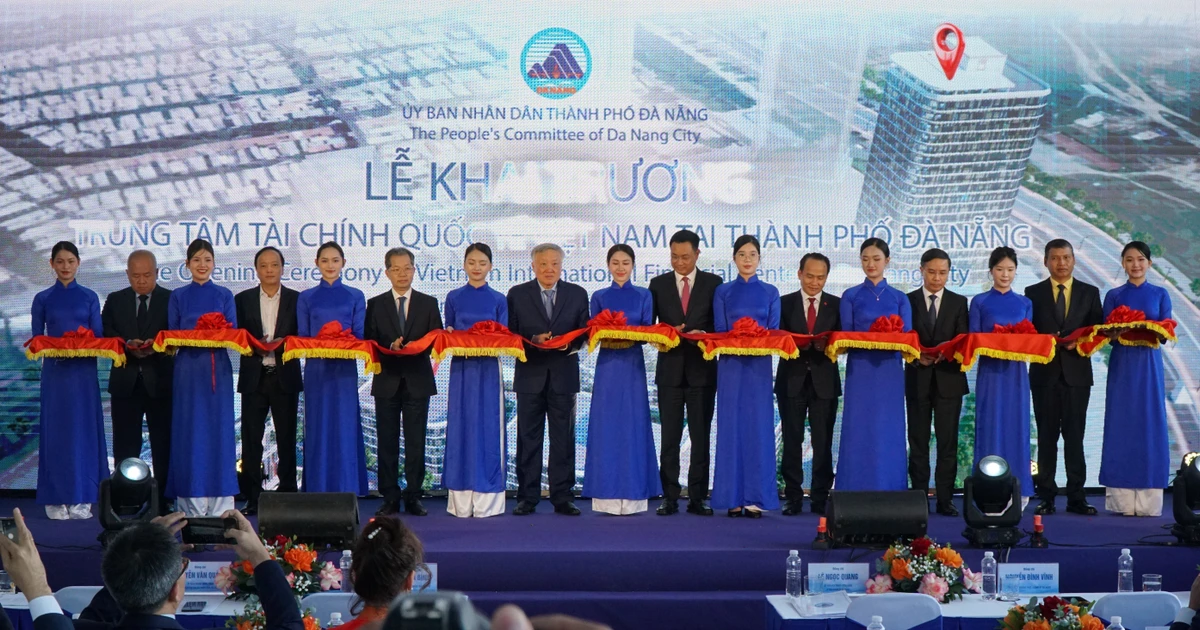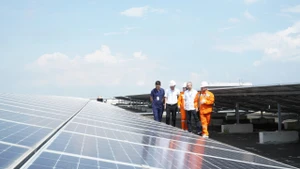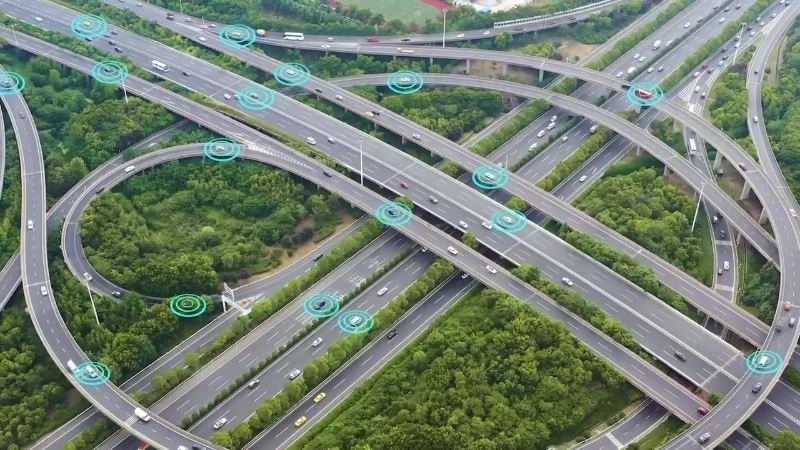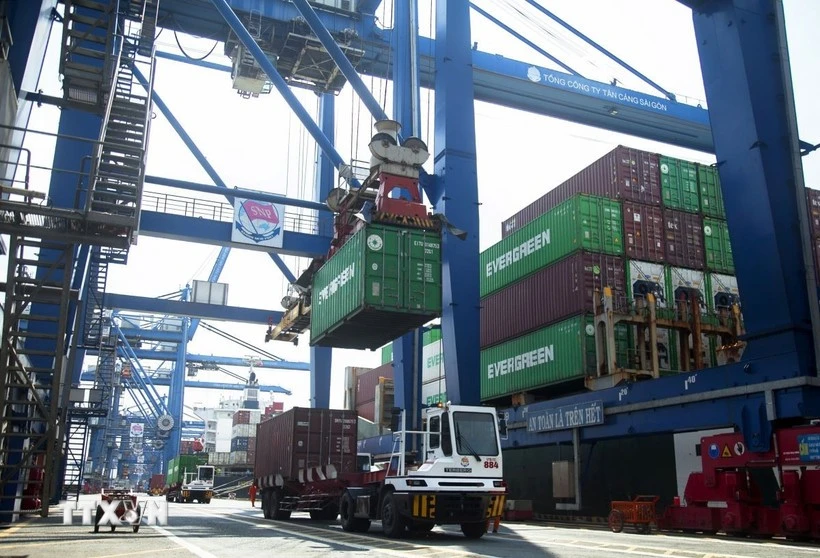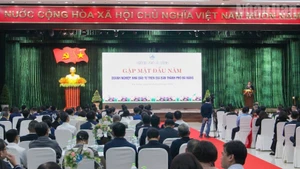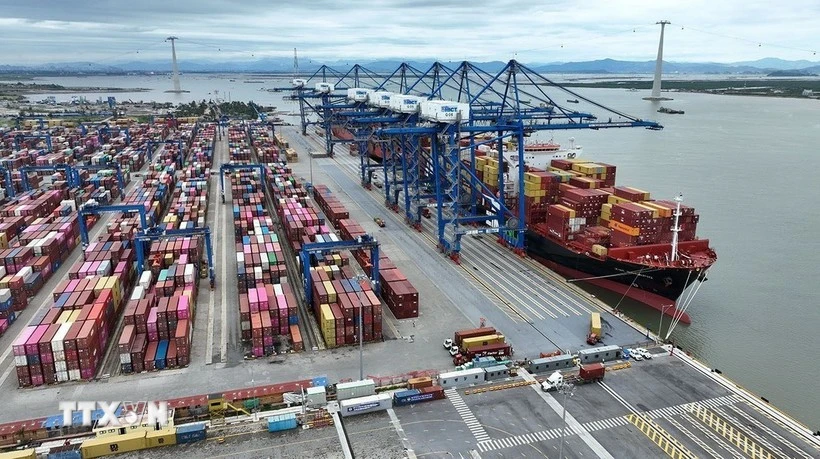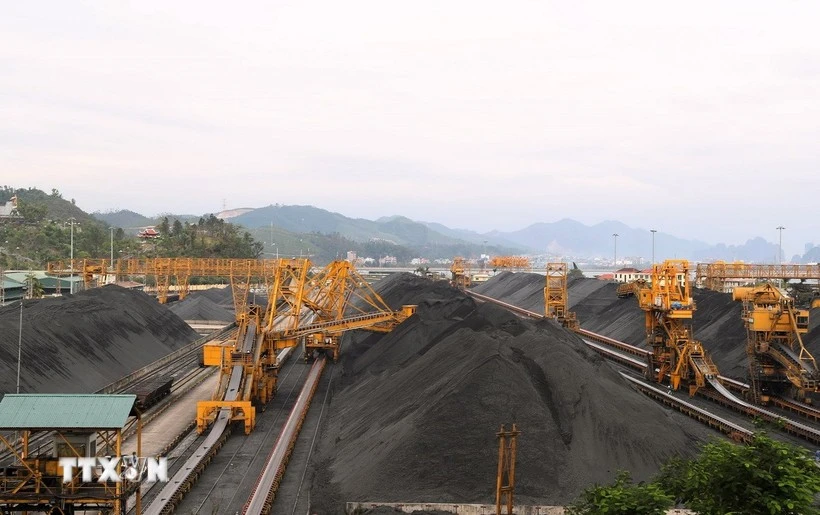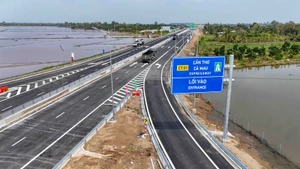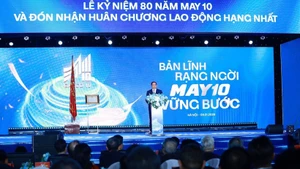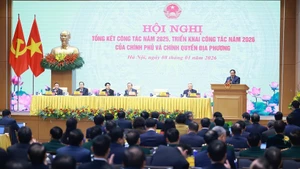According to Power Development Plan VIII, the total onshore wind power capacity will increase from 16,000 MW (about 11%) in 2030 to 56,000 MW (14.4%) in 2045, while offshore wind power will rise from 7,000 MW (4.8%) in 2030 to 64,500 MW (16.6%) in 2045. The proportion of electricity from renewable energy sources (including hydropower) in total electricity production is projected to reach 33.4% by 2030 and 54.3% by 2045. This will enhance the country’s energy security, reduce dependence on imported fuels, and increase self-reliance in power supply.
An inevitable trend
Bui Quoc Hung, Deputy Director of the Department of Electricity and Renewable Energy (Ministry of Industry and Trade), stated that the total power generation capacity of the entire system had reached about 79,350 MW by the end of 2022, with renewable energy sources (wind and solar power) accounting for 20,165 MW, or 25.4%. The rapid development of renewable energy sources has contributed additional capacity and output to the national power grid, enabling Vietnam to tap into its potential and advantages while reducing greenhouse gas emissions and lessening the country’s reliance on imported fuels such as coal, oil, and gas, which are subject to volatile prices.
The power programme also focuses on accelerating renewable energy sources compared to before. By 2030, the total capacity of power plants is expected to reach about 121,757-145,989 MW, including: hydropower 27,353-28,946 MW (19.8-22.5%); coal-fired power 30,127-36,327 MW (20.6-29.8%); domestic gas and LNG (liquefied natural gas) power 30,330-39,430 MW (24.9-27%); non-hydropower renewable energy 21,871-39,486 MW (18-27%); and imported electricity 4,076-5,000 MW (3.3-3.4%).
Despite favourable conditions, investment into renewable energy projects currently faces challenges due to high capital requirements, significant risks arising from dependency on weather and climate, and long payback periods.
Vietnam has not yet established national technical standards and regulations for solar and wind power systems, and the domestic technological capacity and expertise remain limited. Additionally, the country lacks technical infrastructure and support services for repair, maintenance, and equipment replacement.
The development of renewable energy in recent years has also exposed some shortcomings in the planning, investment management, and operation of wind and solar power projects. There has been a lack of coordination with the transmission system, leading to grid congestion and forced reductions in power output.
In recent years, the global demand for LNG has significantly increased. According to statistics, global LNG demand has grown at an average rate of 6.3% per year, with global LNG capacity rising from 340 million tonnes per year (in 2017) to 453 million tons per year (in 2022).
The shift towards LNG power generation is inevitable, especially in the context of the strong commitments made by Vietnam at the COP26 Conference. Developing LNG power generation in the future will certainly help make the energy sector greener and reduce reliance on coal-fired power plants, which currently make up a large portion of the power system.
Mai Duy Thien, Chairman of the Vietnam Clean Energy Association (VCEA), affirmed that green development, energy transition, and emission reduction are inevitable trends that Vietnam has committed to. These efforts also create opportunities to restructure and develop the economy in a green, clean, and sustainable direction. Investment in renewable energy (wind and solar power) in Vietnam has seen remarkable growth over the past 4 to 5 years. As of now, the total capacity of renewable energy and medium-to-large hydropower plants has reached 43,126 MW, accounting for 55.2% of the total capacity of Vietnam’s power system. By 2050, Vietnam’s energy system will undergo a fundamental transformation in its energy structure, shifting from reliance on fossil fuels to clean and renewable energy sources, while promoting energy efficiency.
Removing barriers
According to the national energy plan and Power Development Plan VIII, Vietnam currently has 23 LNG power and offshore wind projects that are being invested in, built, and expected to be operational by 2030, with a total capacity of 30,424 MW. This includes 10 gas power plants using domestically extracted gas with a capacity of 7,900 MW, and 13 LNG power plants with a capacity of about 22,400 MW.
As of June 2024, the O Mon I thermal power plant, with a capacity of 660 MW, is currently running on oil, and will begin operations using gas from Block B. Additionally, the Nhon Trach 3 and 4 thermal power plants, with a combined capacity of 1,624 MW, have reached 85% completion and will use LNG from the Thi Vai LNG terminal, which is still under construction.
Furthermore, 18 other projects are currently under construction, including nine projects using domestically extracted gas, while three projects are in the process of selecting investors, with a total capacity of 4,500 MW.
Addressing the challenges in implementing LNG power and offshore wind projects, Nguyen Quoc Thap, Chairman of the Vietnam Petroleum Association, pointed out that the process of adjusting power development plans lacks clear guidelines for the evaluation and approval procedures for investment projects. Financial mechanisms and capital mobilisation are facing obstacles due to exceeding the 15% credit safety limit on equity when lending under the Law on Credit Institutions. Additionally, most large power projects do not qualify for government guarantees, and investment incentive policies for power and renewable energy projects as stipulated in the Electricity Law have been delayed.
“The growth of the gas power market is slower than the goals set in Power Development Plan VIII due to an incomplete legal framework needed to accelerate the legal, economic, and commercial agreements among the parties involved in the LNG project chain. There are also no specific guidelines for selecting investors to build infrastructure for LNG imports, creating difficulties for investors to participate. Moreover, the process for approving policies and selecting investors for wind power projects faces obstacles and lacks consistency across the current legal framework.
Investigation, exploration, and measurement at sea, as well as the allocation of marine areas for offshore wind projects, do not have specific guidelines on procedures in the legal documents. There is also no pricing framework or mechanism, which are key obstacles to the development of the gas and wind power markets,” emphasised Nguyen Quoc Thap.
To overcome these difficulties and promote the development of LNG power and offshore wind projects, relevant authorities must quickly implement solutions, including amending and supplementing various related laws, such as the Electricity Law, the Environmental Protection Law (to account for CO2 emissions and guidelines for emission conversion), the Tax Law, and the Investment Law.
The Ministry of Industry and Trade should focus on developing the electricity market in line with the goals of Power Development Plan VIII by establishing a centralised and integrated network of LNG terminals, power plants, and industrial zones that have high electricity consumption demand. This approach should attract and encourage investors to commit to long-term electricity consumption, along with chains of LNG power plants, offshore wind power, and transmission infrastructure for both domestic consumption and export, especially for LNG power and offshore wind power plants.


